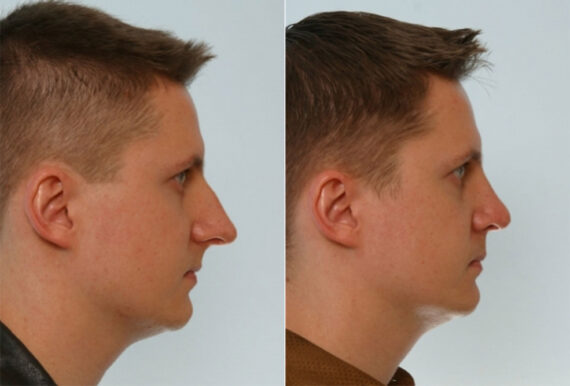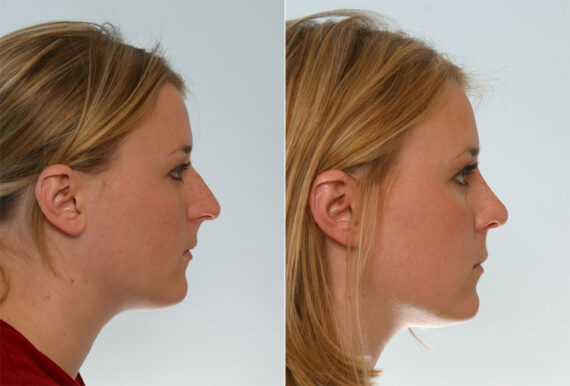Rhinoplasty, commonly known as a nose job, is more than just a cosmetic procedure. It’s a journey towards enhancing one’s facial appearance while maintaining or improving functional aspects of the nasal structure. This comprehensive guide explores the different types of rhinoplasty procedures, helping potential patients understand their options.

Understanding the Basics of Rhinoplasty
At its core, rhinoplasty is a surgical procedure aimed at reshaping the nose to improve its appearance and functionality. This can involve altering the nasal bone, nasal bridge, or soft tissue. The procedure not only caters to those seeking cosmetic improvements but also assists individuals facing functional issues like breathing difficulties.
Choosing the right type of rhinoplasty is crucial. Options range from cosmetic nose surgery, which focuses on appearance, to functional rhinoplasty, which addresses breathing problems. Understanding these options and how they relate to your goals is essential for a satisfactory outcome.
Different Techniques in Rhinoplasty: A Comprehensive Overview
Rhinoplasty, often referred to as a nose job, is not a one-size-fits-all procedure. The techniques employed are as varied as the noses they are designed to reshape. This section delves deeper into the types of rhinoplasty procedures, each tailored to address specific aesthetic and functional needs.
Traditional Rhinoplasty: The Classic Approach
Traditional rhinoplasty, encompassing both closed and open techniques is considered the gold standard in nasal reshaping surgery. Closed rhinoplasty, a more traditional approach, involves incisions made exclusively inside the nostrils, leaving no visible external scars. This technique is particularly favored for patients requiring minor to moderate changes to the nasal structure. It allows the surgeon to modify the nasal bone, cartilage, and soft tissue with minimal invasiveness. However, the limited visibility and access to the nasal framework may restrict the extent of changes that can be achieved, making it less suitable for more complex or significant alterations.
Open rhinoplasty, on the other hand, involves a small trans-columellar incision, connecting the nostril incisions and allowing the skin to be lifted off the nasal framework. This approach provides the surgeon with a direct view of the nasal structures, offering greater precision, especially in more intricate procedures. Open rhinoplasty is often the preferred method for extensive reshaping, such as correcting a crooked nose, refining the nasal tip, or performing more comprehensive structural changes. Despite the additional incision, skilled surgeons ensure that the resulting scar is minimal and strategically placed to be barely noticeable. This technique’s precision and versatility make it an excellent choice for patients seeking significant aesthetic improvements or needing complex reconstructive work.
Non-Surgical Rhinoplasty: An Alternative Path
For those seeking minor changes or are apprehensive about undergoing a surgical procedure, non-surgical rhinoplasty presents an appealing alternative. This technique uses injectable fillers to subtly alter the shape of the nose. It’s a temporary solution, ideal for adjustments like smoothing out small bumps or refining the nasal tip. However, it’s important to note that non-surgical rhinoplasty cannot reduce the size of the nose or correct functional issues.
Revision Rhinoplasty: Correcting Previous Surgeries
Revision rhinoplasty, also known as secondary rhinoplasty, is a procedure intended to correct or improve the results of a previous nose job. This type of surgery is often more complex, as it deals with changes in the nasal anatomy and potential scar tissue from the original surgery. It requires a surgeon with a deep understanding of nasal structure and extensive experience in rhinoplasty.
Ethnic Rhinoplasty: Tailored Techniques for Diverse Needs
Ethnic rhinoplasty is a specialized approach that acknowledges and respects the unique nasal characteristics of different ethnicities. Surgeons performing ethnic rhinoplasty aim to enhance the patient’s nasal appearance while preserving their inherent ethnic features. This type of rhinoplasty requires a nuanced understanding of varied nasal structures, such as the typically flatter nasal bridge seen in Asian rhinoplasty or the distinct nasal contours often found in patients of Hispanic descent.
Functional Rhinoplasty: Beyond Aesthetics
Functional rhinoplasty is primarily concerned with correcting issues that affect breathing, such as a deviated nasal septum or nasal valve collapse. While it can be performed in conjunction with cosmetic changes, the primary goal is to improve nasal function. This type of surgery often involves restructuring the nasal passages and may include the use of grafts to stabilize the nasal structure.

Specialty Rhinoplasty Types: Addressing Unique Needs
Other specialty types of rhinoplasty include post-traumatic rhinoplasty, which addresses deformities caused by injury, and reconstructive rhinoplasty, aimed at rebuilding the nose after accidents or disease. Each of these specialty types requires a surgeon with specific skills and experience to address the unique challenges they present.
Understanding these different approaches is crucial for anyone considering a rhinoplasty procedure. It’s essential to consult with experienced rhinoplasty surgeons who can recommend the most appropriate technique based on your individual needs, goals, and nasal anatomy. With the right approach and an expert hand, rhinoplasty can not only enhance your appearance but also improve the quality of your life by addressing both cosmetic and functional concerns.
The Nose Job Process: What to Expect
The process of undergoing rhinoplasty is multi-faceted, involving initial consultations, the surgical procedure itself, and a recovery period.
Pre-Surgery Consultation: Preparing for Your Rhinoplasty
During initial consultations, plastic surgeons or facial plastic surgeons conduct a thorough physical exam and discuss individual goals. This conversation includes potential accommodations to maintain the balance with other facial features.
The Surgical Procedure: Step-by-Step
The actual incisions and surgical techniques used will depend on the chosen type of rhinoplasty. For instance, in closed rhinoplasty, all incisions are hidden inside the nose, while open rhinoplasty involves a small trans-columellar incision.
Post-Operative Care and Recovery
The recovery process varies, but generally includes a period of rest, avoiding strenuous activities, and following specific care instructions to minimize risks like infection or blood clots. Recovery time is crucial for both aesthetic and functional recovery.
How to Choose the Right Rhinoplasty Technique for You
Selecting the appropriate type of rhinoplasty surgery involves considering several factors, including the patient’s unique nasal anatomy, desired outcome, and any previous surgeries.
Each patient’s reason for considering rhinoplasty is unique, ranging from correcting a broken nose to achieving a more refined nasal tip. An experienced rhinoplasty surgeon will help navigate these choices.
Understanding Risks and Expectations
Rhinoplasty, like any surgery, carries risks. These include post-surgical nasal congestion, the potential for revision surgery, and the usual risks associated with anesthesia. Setting realistic expectations is key to satisfaction with the outcome.
The Role of the Surgeon in Decision-Making
A skilled surgeon, with extensive experience in different types of nose jobs, can provide invaluable advice. They will consider factors like nasal skin thickness, the strength of cartilage structures, and overall facial anatomy to recommend the most suitable approach.
The Consultation: Key to a Successful Rhinoplasty
The consultation process is a critical step in the journey towards a successful rhinoplasty. It’s the time to ask questions, express concerns, and build a treatment plan tailored to individual aesthetic goals.
What to Discuss with Your Plastic Surgeon
During the consultation, it’s essential to discuss everything from aesthetic goals to functional concerns. This includes any past surgeries, desired changes in nose shapes, and any breathing issues.
A comprehensive medical history and physical exam are vital for a safe and successful procedure. This includes assessing the nasal passages, cartilage strength, and any previous nasal deformity or surgery.
Visualizing the Outcome: Imaging and Planning
Many surgeons use imaging software to give patients a glimpse of potential results. This helps in aligning expectations and tailoring the surgical plan to the patient’s specific desires.
Empowering Your Rhinoplasty Journey
Making an Informed Decision
The final goal of this guide is to empower you with detailed information about the different types of rhinoplasty procedures. By understanding the various techniques and what each entails, you can make an informed decision that aligns with your aesthetic and functional needs.
The Path to a Confident New You
Rhinoplasty is not just a surgical procedure; it’s a transformative journey that can significantly impact your self-confidence and quality of life. Whether you’re considering a closed rhinoplasty for a minor imperfection, an ethnic rhinoplasty to preserve your unique facial features, or a revision rhinoplasty to correct a previous surgery, it’s essential to choose a surgeon with extensive experience in the specific type of rhinoplasty you require.
Remember, the key to a successful nose job lies in choosing the right type of surgery, understanding the risks and recovery process, and having clear and realistic expectations. With the right approach and an experienced rhinoplasty surgeon, you can achieve a nose that not only looks great but also complements your overall facial appearance and improves any functional issues.
Embarking on a rhinoplasty journey is a significant decision, and being well-informed is the first step towards achieving the results you desire. We hope this guide provides you with the knowledge and confidence to navigate the world of rhinoplasty and make the best decision for your individual needs.
Ready to explore your rhinoplasty options with a renowned expert? Contact Dr. Vitenas in Houston today and take the first step toward achieving your ideal facial harmony. Schedule your personalized consultation and discover how Dr. Vitenas can guide you through a transformation that not only enhances your appearance but also boosts your confidence. Your journey towards a refined, natural-looking nose starts here!


